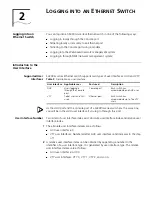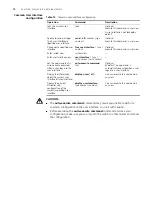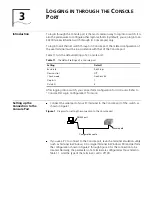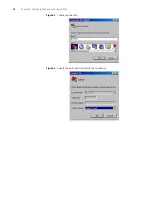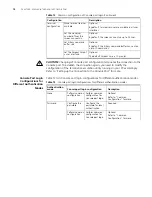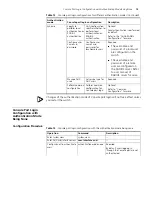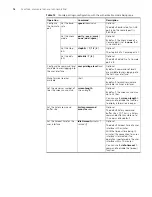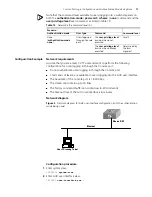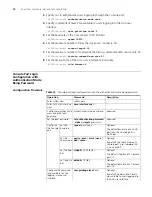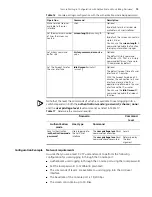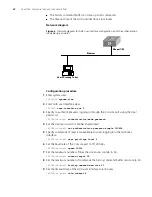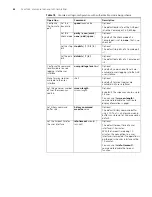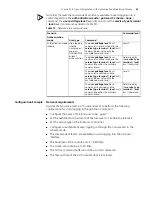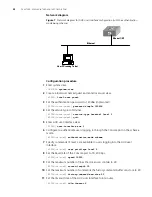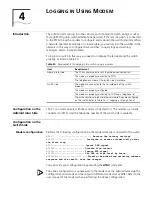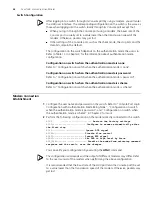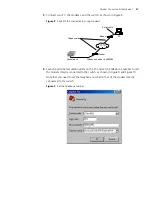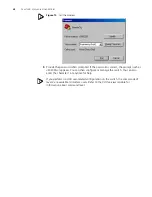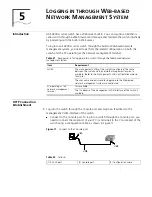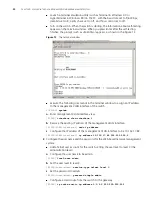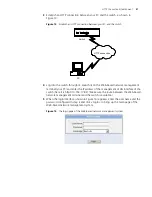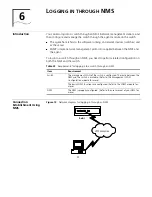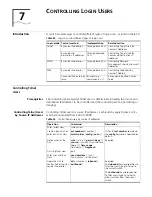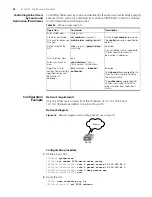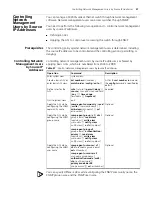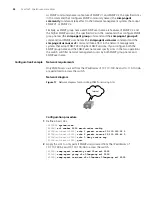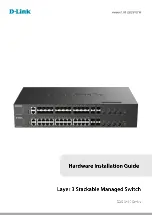
Console Port Login Configuration with Authentication Mode Being Scheme
23
Note that the level the commands of which are available to users logging into a
switch depends on the
authentication-mode
{
password
|
scheme
|
none
}
command, the
user privilege level
level command, and the
service-type
terminal
[
level
level ] command, as listed in Table 19.
Configuration Example
Network requirements
Assume that you are a level 3 VTY user and want to perform the following
configuration for users logging in through the Console port:
■
Configure the name of the local user to be “guest”.
■
Set the authentication password of the local user to 123456 (in plain text).
■
Set the service type of the local user to Terminal.
■
Configure to authenticate users logging in through the Console port in the
scheme mode.
■
The commands of level 2 are available to users logging into the AUX user
interface.
■
The baud rate of the Console port is 19,200 bps.
■
The screen can contain up to 30 lines.
■
The history command buffer can store up to 20 commands.
■
The timeout time of the AUX user interface is 6 minutes.
Table 19
Determine the command level
Scenario
Command level
Authentication
mode
User type
Command
authentication-mode
scheme
Users logging
into the
Console port
and pass
AAA&RADIUS
or local
authentication
The
user privilege level
level
command is not executed, and the
service-type
terminal
[
level
level ]
command does not specify the
available command level.
Level 0
The
user privilege level
level
command is not executed, and the
service-type
terminal
[
level
level ]
command specifies the available
command level.
Determined by
the
service-type
terminal
[
level
level ]
command
The
user privilege level
level
command is executed, and the
service-type
terminal
[
level
level ]
command does not specify the
available command level.
Level 0
The
user privilege level
level
command is executed, and the
service-type
terminal
[
level
level ]
command specifies the available
command level.
Determined by
the
service-type
terminal
[
level
level ]
command
Summary of Contents for 4200G 12-Port
Page 10: ...8 CONTENTS...
Page 14: ...4 ABOUT THIS GUIDE...
Page 46: ...32 CHAPTER 5 LOGGING IN THROUGH WEB BASED NETWORK MANAGEMENT SYSTEM...
Page 48: ...34 CHAPTER 6 LOGGING IN THROUGH NMS...
Page 60: ...46 CHAPTER 9 VLAN CONFIGURATION...
Page 64: ...50 CHAPTER 10 MANAGEMENT VLAN CONFIGURATION...
Page 80: ...66 CHAPTER 13 GVRP CONFIGURATION...
Page 98: ...84 CHAPTER 15 LINK AGGREGATION CONFIGURATION...
Page 112: ...98 CHAPTER 18 MAC ADDRESS TABLE MANAGEMENT...
Page 126: ...112 CHAPTER 19 LOGGING IN THROUGH TELNET...
Page 162: ...148 CHAPTER 20 MSTP CONFIGURATION...
Page 274: ...260 CHAPTER 29 IGMP SNOOPING CONFIGURATION...
Page 276: ...262 CHAPTER 30 ROUTING PORT JOIN TO MULTICAST GROUP CONFIGURATION...
Page 298: ...284 CHAPTER 33 SNMP CONFIGURATION...
Page 304: ...290 CHAPTER 34 RMON CONFIGURATION...
Page 338: ...324 CHAPTER 36 SSH TERMINAL SERVICES...
Page 356: ...342 CHAPTER 38 FTP AND TFTP CONFIGURATION...
Page 365: ...Information Center Configuration Example 351 S4200G terminal logging...
Page 366: ...352 CHAPTER 39 INFORMATION CENTER...
Page 378: ...364 CHAPTER 40 BOOTROM AND HOST SOFTWARE LOADING...
Page 384: ...370 CHAPTER 41 Basic System Configuration and Debugging...
Page 388: ...374 CHAPTER 43 NETWORK CONNECTIVITY TEST...
Page 406: ...392 CHAPTER 45 CONFIGURATION OF NEWLY ADDED CLUSTER FUNCTIONS...

